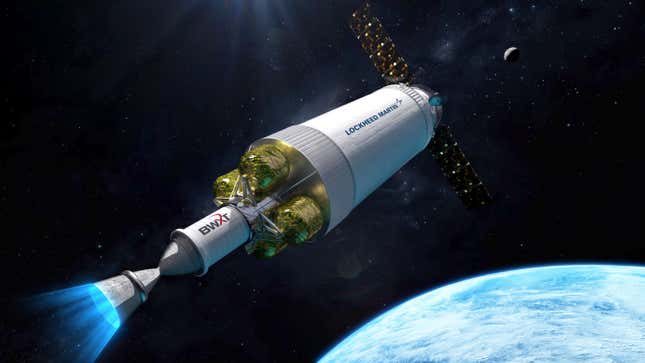
Nuclear-powered spacecraft could be the apex vehicle of this century’s space race. Concepts and designs for reactor-equipped rockets have been around for over 50 years but have never left the experimental stage. Despite ambitions to boldly go where no one has gone before, America’s latest push to get nuclear propulsion is to get the upper hand on the country’s new adversary in orbit, the People’s Republic of China.
The latest nuclear rocket project got off the ground in 2023 when NASA and DARPA awarded Lockheed Martin with a $499 million contract to build the Demonstration Rocket for Agile Cislunar Operations. DRACO, a very catchy acronym, will be about 49 feet long and 17.7 feet in diameter to fit on the Vulcan Centaur rocket that will lift it from the surface. The Centaur will soon be the launch vehicle for the Boeing Starliner. Ars Technica laid out the case for the DRACO that US Space Command made to Congress:
DARPA’s website says it has always held to a singular mission of making investments in breakthrough technologies for national security. What does a nuclear-powered spaceship have to do with national security? The military’s perspective was hinted at by General James Dickinson, a US Space Command officer, in his testimony before Congress in April 2021.
He said that “Beijing is seeking space superiority through space attack systems” and mentioned intelligence gathered on the Shijian-17, a Chinese satellite fitted with a robotic arm that could be used for “grappling other satellites.” That may sound like a ridiculous stretch, but it was enough get a go-ahead for a nuclear spaceship.
The appeal of nuclear-powered rockets is efficiency. They are twice as efficient as traditional chemical rockets because they only need to carry hydrogen for fuel and don’t need an oxidizer to create ignition in the vacuum of space. That efficiency can be used to reach extremely high speeds. DRACO is intended to be a test bed for rapid-response rockets between Earth and the Moon, a military deterrent in space.
There’s only one catch. The rocket needs to carry fissile material for the reactor, weapons-grade uranium. DRACO will use high-assay-low-enriched uranium (HALEU), a new fuel with a lower level of enrichment and much more difficulty to construct a nuclear weapon with. The rocket’s use shouldn’t pose a risk to the public because the Centaur’s chemical rocket will be used to lift it off the pad.
Ignoring the pending death of the International Space Station, it’s hard not to get excited about space exploration at the moment. NASA’s Artemis program is in the middle of returning to the Moon for good with an outpost on the surface and a station in lunar orbit. From there, Mars and the rest of the Solar System could be next on the agenda.







